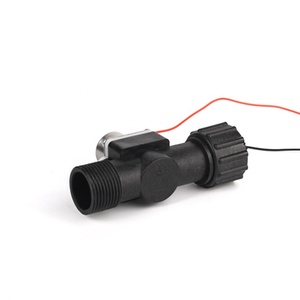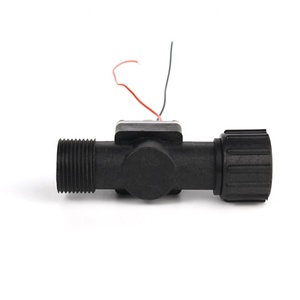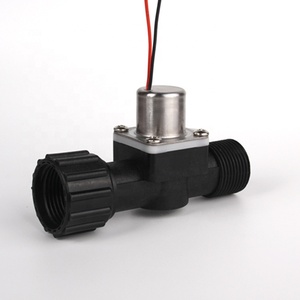
All categories
Featured selections
Trade Assurance
Buyer Central
Help Center
Get the app
Become a supplier

(1842 products available)




















































There are different kinds of wireless irrigation control systems, and all of them help make irrigation systems work better and are good for different kinds of users, from home gardeners to big farms. Here are the most common types:
Smart controllers
Smart controllers are gadgets that automatically change how much water is given to plants by looking at the weather and soil conditions. They are different from regular ones because these controllers use the Internet or satellite data to adjust the watering times and amounts, so they don’t need much water. For example, on rainy days, the system slows down watering, while hot days make it water more. This helps keep plants healthy and green without wasting any water.
Mobile apps and remote access
Some irrigation control systems let users manage watering schedules and check the status of their systems using a phone or tablet app. These systems are very useful because users can change things quickly even if they are not at home or if weather changes suddenly. Being able to access the system from far away means changes can be made at the right time without any delays.
Soil moisture sensors
Soil moisture sensors are big help because they send data to the user’s phone, telling them how wet or dry the ground is. These sensors are now often put into smart controllers, so the controller knows exactly how much water the plants need. By using these sensors, plants never get over- or under-watered because the water levels in the soil are always checked.
Weather-based controllers
Weather-based controllers use local weather data to help water plants properly. Unlike standard systems, these controllers stop or change watering when it rains or when temperatures are lower. They get weather information from satellite, local stations, or the Internet to help save water by not watering when it isn’t needed. This keeps plants from getting too much or too little water.
Zone control systems
Zone control systems make it easy to give different amounts of water to different areas of the yard. These systems use wireless valves to divide the irrigation treatment areas into smaller zones, enabling special treatments like more or less water for certain plants, grass, or gardens. This system ensures that all plants receive the right amount of water for growth while preventing some areas from becoming soggy or dried out.
Agriculture
Farmers use wireless irrigation control systems to give the right amount of water to crops, which leads to bigger harvests and less wasted water. These systems work automatically by using data from the weather, soil, and plants to tell when and how much to water. With their help, farmers don’t have to water plants as much by hand, and they can make food grow better even during dry times. Using these controls helps all crops grow healthy and strong while using water wisely.
Landscaping and groundskeeping
Large public parks, golf courses, and big commercial landscapes rely on wireless control systems to keep huge areas green without wasting water. They help groundskeepers remotely manage irrigation schedules for different sections based on local weather conditions and how dry each part gets. This precise watering makes landscapes look better and prevents some plants from getting too much or too little water. The systems also help save water money by cutting down on water bills through smart watering practices.
Hospitality industry
Hotels, resorts, and other hospitality places use wireless systems to keep their grounds beautiful at lower costs at many locations. The systems automatically water lawns, gardens, and golf courses based on weather and soil moisture sensors. This keeps landscaping looking great without over- or under-watering anything. Guests enjoy nicer surroundings, and places spend less on water bills while still making landscapes look their best.
Urban infrastructure
Cities and towns use wireless control systems to manage irrigation for public parks, street trees, and green spaces around buildings and roads, creating an ideal environment. With the controls, parks stay green without wasting water, and areas dry out from lighting or pollution are rejuvenated. The systems use sensors to water based on weather conditions and how dry the soil gets so that parks and plants look good year-round. This saves parks, trees, and other greens and makes living spaces more enjoyable.
Viticulture and orchard management
Grape growers and fruit farmers rely on systems to precisely water vines, apples, and other fruits for the best flavor and quality. They avoid watering too much or too little by using soil sensors and weather data to keep grapes ripe and oranges and other fruits juicy without waste. This gives farmers grapes for wine and fruit for cider and juice that are truly the best with just the right amount of water.
Key features
Wireless irrigation control systems have cool features that help water things better without wasting water. A main part, the smart controller, uses weather data, soil conditions, and plants' needs to automatically change watering for lawns, gardens, and farms. Wireless technology allows the controller to connect to sensors, moisture meters, and rain detectors, making adjustments without any wires. Many of these systems also connect to phones through an app to give owners remote access to controls and real-time updates while watering things around homes, stores, or schools.
This smart technology allows landscapes to stay healthy, green, and beautiful, with water not going to waste on dry areas, flooded spots, or ones that get overwatered. Special system parts like moisture sensors, rain shutoff switches, and flow monitors work with the controller to turn watering on or off based on the conditions outside and in the ground. For really big areas, zone control systems divide landscapes into sections that get exactly the right amount of water for different plants' various needs. Using satellite, internet, or local weather services, the controller gets up-to-date forecasts to hold off on watering during rains or cool times, saving lots of water while keeping things at their best.
How to install
Installing a wireless irrigation control system is a pretty easy job with big benefits and little hassle. To start, people should pick the right smart controller that fits their yard, garden, or farm, then gather some basic tools like a screwdriver and a few wire strippers. First, they explain how the new controller replaces the cabinet-mounted old one by disconnecting the wires from it. Then, they connect those same wires to the new smart controller.
After that, they put the new controller somewhere it can easily receive wireless signals. The tricky part – installing sensors and wireless gadgets throughout the area – is done next. They use wires or wireless options for soil moisture sensors, rain detectors, and other devices to link to the controller.
The next step is setting up an irrigation schedule using the phone app or smart controller for the plants in the space. Finally, testing the system ensures everything works correctly, providing plants with just the right amount of water for optimal growth.
Maintenance and repair
Keeping systems in working order requires regular checks and care. Users should clean or replace sprinkler heads regularly so water goes where it should. Walking through the area to find any broken pipes or wires is also smart. Controllers need updates, too, so users download the latest software when available.
Wireless signals between the controller and valves should be tested monthly, as batteries in wireless gadgets like sensors or rain shutoffs may need changing often. It’s best for the smartphone app and controller to stay linked at all times for accurate data. Inside the controller, values from sensors should be verified now and then, with wrong readings fixed by replacing bad sensors. Lastly, doing a full test run of the watering schedule before each growing season gets everything prepared for plants to thrive.
Quality considerations
Big factors to think about when picking a system are its smart features and how strong it is. Getting a controller that automatically changes watering based on weather and soil data is very helpful because it doesn't require much human work. Picking a tough controller made for high or very low temperatures, strong storms, or sunny days is wise, too, so the system lasts a long time through different outdoor conditions.
Ensuring many sensors work with the controller, like ones for soil moisture, rainfall, or temperature, helps water plants exactly the right amount. Choosing a durable, weatherproof system that can take heat, cold, or storms is smart. To be sure it works well, looking for customer reviews or scores from expert tests also helps find the best options.
Safety considerations
Water waste and evaporation can harm the environment, which is why picking a controller that limits these problems is important. Finding models that slow down watering during hot weather or allow it only when plants need moisture helps conserve water resources in areas where water is often scarce. Controllers that help cut down energy used to run pumps and systems also relieve stress on fragile ecosystems.
Staying safe outdoors requires reading the manual and following safety tips, like not getting electrical parts wet during storms. Properly installing and securing all wires keeps people safe near the system. Being careful around any chemicals, like sensor batteries, also protects the environment and users. Regular checks help ensure nothing is leaking or damaged that could harm soil and plants.
A1: It is a smart tool that automatically waters plants using weather and soil data.
A2: By adjusting watering times based on conditions, it prevents waste and overwatering.
A3: Yes, users can adjust settings through a mobile app from anywhere.
A4: Farmers, landscapers, and homeowners all find it easier to manage their irrigation.
A5: Yes, it's easy to set up, and many systems are DIY-friendly.